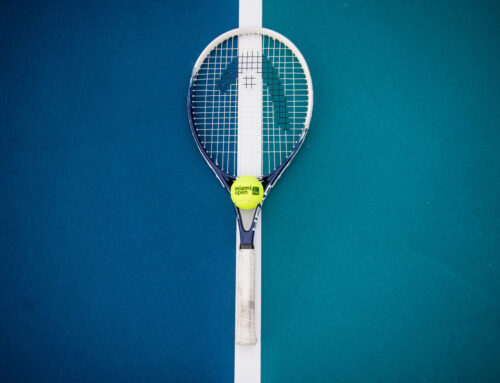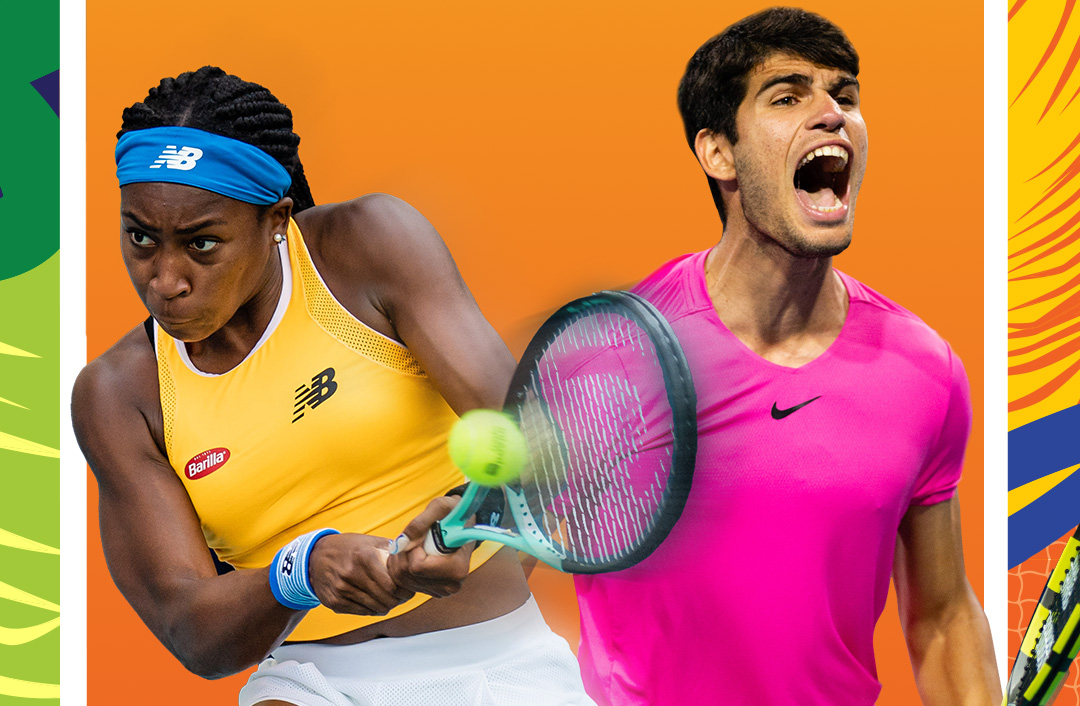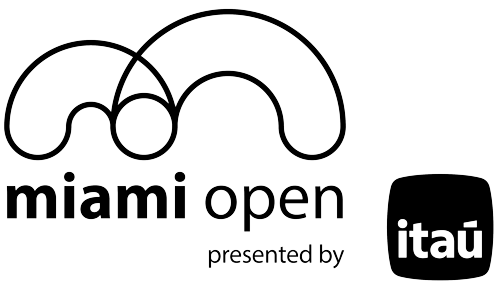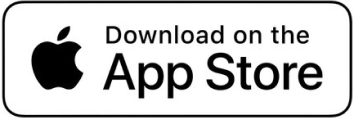By Steve Gorten
KEY BISCAYNE – When Glen Outlaw runs onto the tennis court amongst the teenagers he considers teammates, he sometimes hears giggling coming from the crowd.
Players will give him a strange look, surprised by what they see.
One player told him before a match, “I feel bad asking you for a drink – because you’re like my dad,” and the two of them shared a laugh.
Outlaw, who will celebrate his 55th birthday on the day of the women’s singles final, is the oldest of 400 ballpersons at the 2015 Miami Open – the largest ballpersons program in the world, according to their director, Marc Adler – but no less exuberant about his position than the 13-year-olds who’re the youngest.
“People sometimes pay $1000 for a seat, and we’ve got the best seat in the house!” said Outlaw, who has been a ballperson at the Miami Open for four years and overall nearly two decades. “You get to see all the emotions of the players – the real, raw emotion.”
Being a ballperson can be a tough job. You’re out in the hot sun all day, chasing down balls across the court, or tossing them to players, handing out towels and water, and providing shade by holding an umbrella over the participants during changeovers. You do this while trying not to be disruptive of players’ rhythm and routine.
But it’s also a rewarding responsibility that about 800 hopeful applicants each year try to receive for two weeks at the Crandon Park Tennis Center.
“The way we look at it is they’re applying for a very prestigious position because a ballperson is one of the most important people on the court,” Adler said. And, of course, “you can’t get a better seat than actually being on the court with a player you idolize and being able to interact with them.”
“You feel the intensity of the game,” said 13-year-old Ryan Corman, an eighth-grader at Miami Palmetto Middle School whose first day as a ballperson was Monday. He grew up attending the tournament every year.
So did Domingo Alegria, a 16-year-old sophomore at Cypress Bay High School, who decided to become a ballperson after seeing the joy his older brother, 18-year-old Jose Luis, experienced in his first year at the Miami Open.
“The first time I stepped on the court, I was really nervous because I knew a lot of people were watching,” he said. “But last year I got to do some really big matches, like the Men’s singles final and Women’s doubles final. My mindset is, ‘OK, just do your thing. Do what you’ve practiced, and in the end it’ll turn out perfectly.”
Domingo Alegria is now in his third year working the tournament, as is Begona Robredo, a 15-year-old sophomore at Immaculata-La Salle High School.
“I’ve wanted to do it since I was in the sixth grade,” Robredo said, “and I started with a friend of mine a year later. The moment I got here, I loved it. It feels like summer camp.
“It’s like my third home,” she added. “You’re a little team when you go out on the court. It’s like your family for the day. And being with the players is a huge plus.”
On Monday, the ballpersons received a visit in their headquarters – a large white tent on ground level – from Madison Keys, the 20-year-old American ranked No. 18 in the world. Keys, who grew up in nearby Boca Raton, participated in a question-and-answer session with the ballpersons and then posed with them for pictures.
“Most of the time, the only interaction you have with ballkids is when you’re on the court,” Keys said. “So it’s cool to get to talk to them on more of a personal level. You’re not so focused that you’re ignoring them. You actually get to talk to them.”
Keys was asked by ballpersons Monday about her favorite tournament (“Wimbledon – I love grass, it’s just so classic,” she said), why she first started playing (“I wanted a tennis outfit”), her favorite shot (“Serve and forehand”) and her favorite type of music (“I listen to lots of rap. It gets me in the right mindframe”). She was also asked what advice she had for ballpersons.
“Don’t take it personal if we’re not always nice to you. We’re appreciative of everything you do,” Keys said. “Sometimes, we’re just stressed out. So I apologize for anyone that’s ever not been nice to you.”
During their time on the court, ballpersons pick up on some of the players’ habits. For instance, most players usually get just one towel from one side of the court, but Rafael Nadal, who he described as superstitious, always asked for two.
Alegria, Robredo and Corman said they all were impressed by Novak Djokovic’s gesture toward a ballboy during a recent first-round match at the French Open. During a changeover, the world’s No. 1 player invited the youngster holding his umbrella to sit in a chair next to him. When the ballboy did, Djovovic grabbed the umbrella and let him hold his racket.
Djokovic then handed the ballboy a bottle of water and toasted him with his own bottle.
“I wish that was me,” Robredo said. “It was amazing seeing him actually recognize us being there.”
So how does one become a ballperson at the Miami Open? Adler said interested individuals can apply on the tournament’s website, www.miamiopen.com, starting in November. In February, training starts. The number of training sessions a candidate must attend depends on his/her experience.
Each of them lasts about five hours, Corman said, and “the non-stop training” includes simulated matches for the ballpersons to show their skill.
“It’s like a tryout,” Adler said. “The way we look at it is they’re applying for a very prestigious position because a ballperson is one of the most important people on the court.”
Half of the applicants are selected to work the tournament and 16 ballpersons are assigned to each court. Adler said the ballpersons with the most experience get to work the high-profile matches.
Outlaw, who is one of the veterans, said being a ballperson provides him unique perspective to the players.
“I enjoy the psychology of it, studying how they react to winning a points, how they react to losing a point,” he said. “It intrigues me.”





